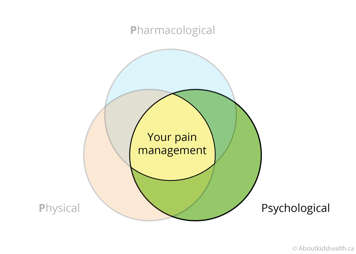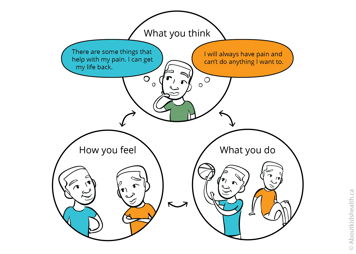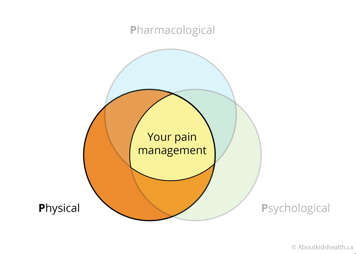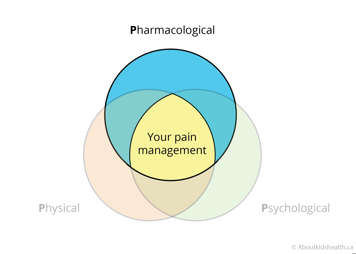Pain is much like hunger and thirst—it requires you to do something to get some relief.
Even if you cannot remove your pain, you can reduce it by changing the pain signals that reach your brain. The most effective way to change your pain signals is through the "3P approach" to pain management.
3P approach to pain management
Pain is best treated with:
Together, these form the 3P approach to pain management. Check out this animation to learn more!
Psychological strategies

Psychological strategies include learning how to manage stress, practise mindfulness, relax tense muscles and think differently about pain. All these strategies can help people reduce pain. Your goal is to find the strategies that will help you manage your pain in healthy ways and let you do the things you enjoy.
A number of psychological strategies are based on the principles of cognitive behavioural therapy (CBT).
Cognitive behavioural therapy
Cognitive behavioural therapy (CBT) is a form of psychological treatment. Its name comes from its focus on the role of thoughts (the cognitive part) and behaviours in how we feel and what we do.
The image below shows how what you think, what you do and how you feel are all related to each other.

CBT has been used for over 30 years with teens dealing with many different pain conditions. It can alter pain signals and change how someone perceives pain. It is one of the best methods for reducing pain and helping people get back to doing their everyday activities.
Cognitive strategies are ways to help with your thinking. They include:
- skills to manage stress
- skills to improve communication and relationships
- thinking in new ways (sometimes called cognitive coping skills)
Behavioural strategies are related to your actions. They include:
- deep breathing and relaxation
- strategies to manage sleep problems
- strategies to increase physical activity
You will learn more about different psychological strategies to help manage your pain throughout the skills modules.
Physical strategies

Physical strategies include finding positions of comfort and exercising. Learning how to get active in the right way can improve blood flow and even train your pain system to be less sensitive. Leading a more active life can improve your mood, sleep and energy level as well as reduce your pain. It also improves your physical function and overall well-being.
Pharmacological strategies

'Pharmacological strategies' is another name for medications. These can also be helpful when you use them with physical and psychological strategies.
Pain medications are designed to reduce pain signals at specific points in the pain pathway. Your health-care provider may recommend other medications or treatments to help manage other sickle cell disease symptoms, improve your sleep, reduce anxiety and help you manage your mood.
You can find more information on pharmacological strategies in the treatment and medications section in the About sickle cell disease tab.







